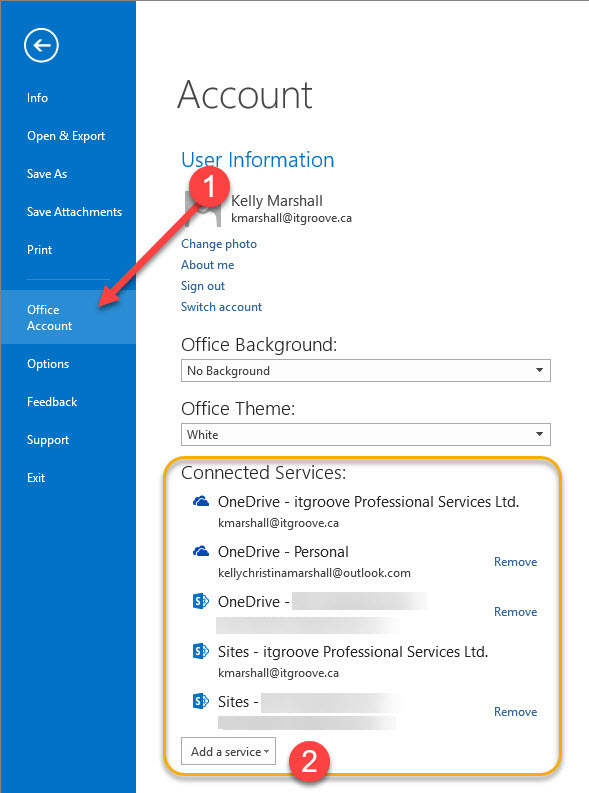- In Outlook previous version, the outlook data file (.pst) is created and saved in hidden folder. So generally, you cannot see and back up it easily. In order to make back up easier, move Outlook data file from default location to another folder is necessary.
- In Outlook latest version, the Outlook data file has been saved in DocumentsOutlook Files automatically while you created it. But if you don’t like it save in this location or you don’t expect it occupying system drive, you can move it to another folder in other hard drive.
How to Change Outlook Data File (.pst) default location?
How to Change Outlook .OST File Default Location
Installation Paths
Where Is My Outlook Email Account
- Word:
WINWORD.EXE - Excel:
EXCEL.EXE - PowerPoint:
POWERPNT.EXE - Access:
MSACCESS.EXE - Outlook:
OUTLOOK.EXE - Visio:
VISIO.EXE - Project:
WINPROJ.EXE
Office XP
- Windows 64-bit:
C:ProgramFilesMicrosoftOfficeOffice10 - Windows 32-bit:
C:ProgramFiles(x86)MicrosoftOfficeOffice10
Office 2003
- Windows 64-bit:
C:ProgramFilesMicrosoftOfficeOffice11 - Windows 32-bit:
C:ProgramFiles(x86)MicrosoftOfficeOffice11
Office 2007
- Windows 64-bit:
C:ProgramFilesMicrosoftOfficeOffice12 - Windows 32-bit:
C:ProgramFiles(x86)MicrosoftOfficeOffice12
Office 2010
- Windows 64-bit:
C:ProgramFilesMicrosoftOfficeOffice14 - Windows 32-bit:
C:ProgramFiles(x86)MicrosoftOfficeOffice14
Click-To-Run
- Windows 64-bit:
C:ProgramFilesMicrosoftOffice14ClientX64RootOffice14 - Windows 32-bit:
C:ProgramFiles(x86)MicrosoftOffice14ClientX86RootOffice14
Office 2013
- Windows 64-bit:
C:ProgramFilesMicrosoftOfficeOffice15 - Windows 32-bit:
C:ProgramFiles(x86)MicrosoftOfficeOffice15
Click-To-Run
- Windows 64-bit:
C:ProgramFilesMicrosoftOffice15ClientX64RootOffice15 - Windows 32-bit:
C:ProgramFiles(x86)MicrosoftOffice15ClientX86RootOffice15
Office 2016
- Windows 64-bit:
C:ProgramFilesMicrosoftOfficeOffice16 - Windows 32-bit:
C:ProgramFiles(x86)MicrosoftOfficeOffice16
Click-To-Run
- Windows 64-bit:
C:ProgramFilesMicrosoftOffice16ClientX64RootOffice16 - Windows 32-bit:
C:ProgramFiles(x86)MicrosoftOffice16ClientX86RootOffice16
GUID
Office XP
- Word: {8E46FEFA-D973-6294-B305-E968CEDFFCB9}
- Excel: {5572D282-F5E5-11D3-A8E8-0060083FD8D3}
- PowerPoint: {FC780C4C-F066-40E0-B720-DA0F779B81A9}
- Access: {CC29E967-7BC2-11D1-A921-00A0C91E2AA3}
- Office: {20280409-6000-11D3-8CFE-0050048383C9}
Office 2003
- Word: {1EBDE4BC-9A51-4630-B541-2561FA45CCC5}
- Excel: {A2B280D4-20FB-4720-99F7-40C09FBCE10A}
- PowerPoint: {C86C0B92-63C0-4E35-8605-281275C21F97}
- Access: {F2D782F8-6B14-4FA4-8FBA-565CDDB9B2A8}
- Office: {90110409-6000-11D3-8CFE-0150048383C9}
Office 2007
- Word: {0638C49D-BB8B-4CD1-B191-051E8F325736}
- Excel: {0638C49D-BB8B-4CD1-B191-052E8F325736}
- PowerPoint: {0638C49D-BB8B-4CD1-B191-053E8F325736}
- Access: {0638C49D-BB8B-4CD1-B191-054E8F325736}
- Office: {0638C49D-BB8B-4CD1-B191-050E8F325736}
Office 2010
32-bit
- Word: {019C826E-445A-4649-A5B0-0BF08FCC4EEE}
- Excel: {538F6C89-2AD5-4006-8154-C6670774E980}
- PowerPoint: {E72E0D20-0D63-438B-BC71-92AB9F9E8B54}
- Access: {AE393348-E564-4894-B8C5-EBBC5E72EFC6}
- Office: {398E906A-826B-48DD-9791-549C649CACE5}
64-bit
- Word: {C0AC079D-A84B-4CBD-8DBA-F1BB44146899}
- Excel: {8B1BF0B4-A1CA-4656-AA46-D11C50BC55A4}
- PowerPoint: {EE8D8E0A-D905-401D-9BC3-0D20156D5E30}
- Access: {02F5CBEC-E7B5-4FC1-BD72-6043152BD1D4}
- Office: {E6AC97ED-6651-4C00-A8FE-790DB0485859}
When you add an email account to Outlook, a local copy of your information is stored on your computer. This feature allows you to access your previously downloaded or synchronized email messages, calendar information, contacts, and tasks without an internet connection.
Certain types of accounts, such as POP accounts, store their information in Outlook Data Files (.pst files). Outlook 365 accounts, Exchange accounts, IMAP accounts, and Outlook.com accounts store their information in Offline Outlook Data Files (.ost files).
Outlook Data File (.pst)
An Outlook Data File (.pst) contains your messages and other Outlook items and is saved on your computer. Autocad 2010 product key codes. POP accounts—which is a common type of account you can create when adding an email account from an internet service provider (ISP) like Xfinity or AT&T or Cox—download all of your email messages from your mail server and save them on your computer.
Note: In Outlook 2013 and earlier versions, IMAP accounts also used an Outlook Data File (.pst). In Outlook 2016 and Outlook for Office 365, IMAP accounts use Offline Outlook Data Files (.ost).
You can also use an Outlook Data File (.pst) to backup or export items from any type of email account. For more information on backing up your email messages, calendar, contact, and task data, see Export or backup email, contacts, and calendar to an Outlook .pst file. You can also import email messages, calendar, contact, and task data from another Outlook Data File (.pst). For more information about importing items, see Import email, contacts, and calendar from an Outlook .pst file.


